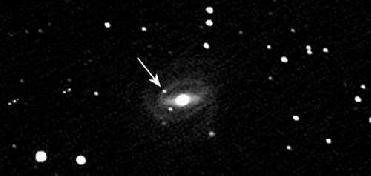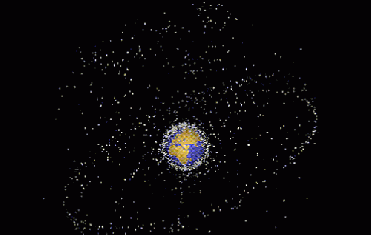
Images of supernova SN 2005gl. Hubblesite
WASHINGTON (BNS): Hubble Space Telescope has identified a star that was one million times brighter than the sun before it exploded as a supernova in 2005. Astronomers say that the star should not have self-destructed so early in its life.
Avishay Gal-Yam of the Weizmann Institute of Science, Rehovot, Israel, said that the new finding means that fundamentally one is wrong about the evolution of massive stars, and that theories need revising.
The astronomer said that according to theory, the doomed star, which is estimated to have weighed about 100 times the Sun's mass, was not mature enough to have evolved a massive iron core of nuclear fusion ash. This is the pre-requisite for a core implosion that triggers a supernova blast, he said.
The findings, which appear in the online version of Nature Magazine, state that the explosion, called supernova SN 2005gl, was seen in the barred-spiral galaxy NGC 266 on October 5, 2005. Pre-explosion pictures from the Hubble archive, taken in 1997, reveal the progenitor as a very luminous point source with an absolute visual magnitude of -10.3.
Gal-Yam said that the progenitor was so bright that it probably belonged to a class of stars called Luminous Blue Variables (LBVs), because no other type of star is as intrinsically brilliant. “As an LBV-class star evolves it sheds much of its mass through a violent stellar wind. Only at that point does it develop a large iron core and ultimately explodes as a core-collapse supernova,” Gal-Yam said.
NASA said that extremely massive and luminous stars topping 100 solar masses, such as Eta Carinae in the Milky Way Galaxy, are expected to lose their entire hydrogen envelopes prior to their ultimate explosions as supernovae. “These observations demonstrate that many details in the evolution and fate of LBVs remain a mystery. We should continue to keep an eye on Eta Carinae, it may surprise us yet again,” Supernova expert Mario Livio of the Space Telescope Science Institute, Baltimore, Midland, said.
On the other hand, co-author Douglas Leonard from San Diego State University, California, said that the progenitor identification shows that, at least in some cases, massive stars explode before losing most of their hydrogen envelope, suggesting that the evolution of the core and the evolution of the envelope are less coupled than previously thought, a finding which may require a revision of stellar evolution theory.
Astronomers say that one possibility is that the progenitor to SN 2005gl was really a pair of stars, a binary system that merged. This would have stoked nuclear reactions to brighten the star enormously, making it look more luminous and less evolved than it really is. “This also leaves open the question that there may be other mechanisms for triggering supernova explosions. We may be missing something very basic in understanding how a super luminous star goes through mass loss,” says Gal-Yam.
During his observation, Gal-Yam reports noticing only a small part of the star's mass was flung off in the explosion. “Most of the material was drawn into the collapsing core that has probably become a black hole estimated to be at least 10 to 15 solar masses,” Gal Yam said.
Researchers Gal-Yam and Leonard located the progenitor in archival images of NGC 266 captured in 1997. It was easily identifiable only because it is so super luminous and Hubble could clearly resolve it at such a great distance, they said.
Using the Keck telescope, the astronomers located the supernova on the outer arm of the galaxy. A follow-up observation with Hubble in 2007 unequivocally showed that the super luminous star was gone. To make sure the new observation was consistent with the 1997 archival image, the astronomers used the same Hubble camera used in 1997, the Wide Field Planetary Camera 2.
Finding archival images of stars before the stars explode as supernovae isn’t an easy task, NASA said, adding that several other supernova progenitor candidates have been reported prior to the Hubble observation. “The only other absolutely indisputable progenitor, however, was the blue super giant progenitor to SN 1987A. In the case of SN 1987A, it was thought that the progenitor star was once a red super giant and at a later stage evolved back to blue super giant status. This led to a major reworking of supernova theory. The progenitor star observed by Gal-Yam is too massive to have gone through such an oscillation to the red giant stage, so yet another new explanation is required,” NASA astronomers noted.
 Previous Article
Previous Article Next Article
Next Article













The Indian Air Force, in its flight trials evaluation report submitted before the Defence Ministry l..
view articleAn insight into the Medium Multi-Role Combat Aircraft competition...
view articleSky enthusiasts can now spot the International Space Station (ISS) commanded by Indian-American astr..
view article